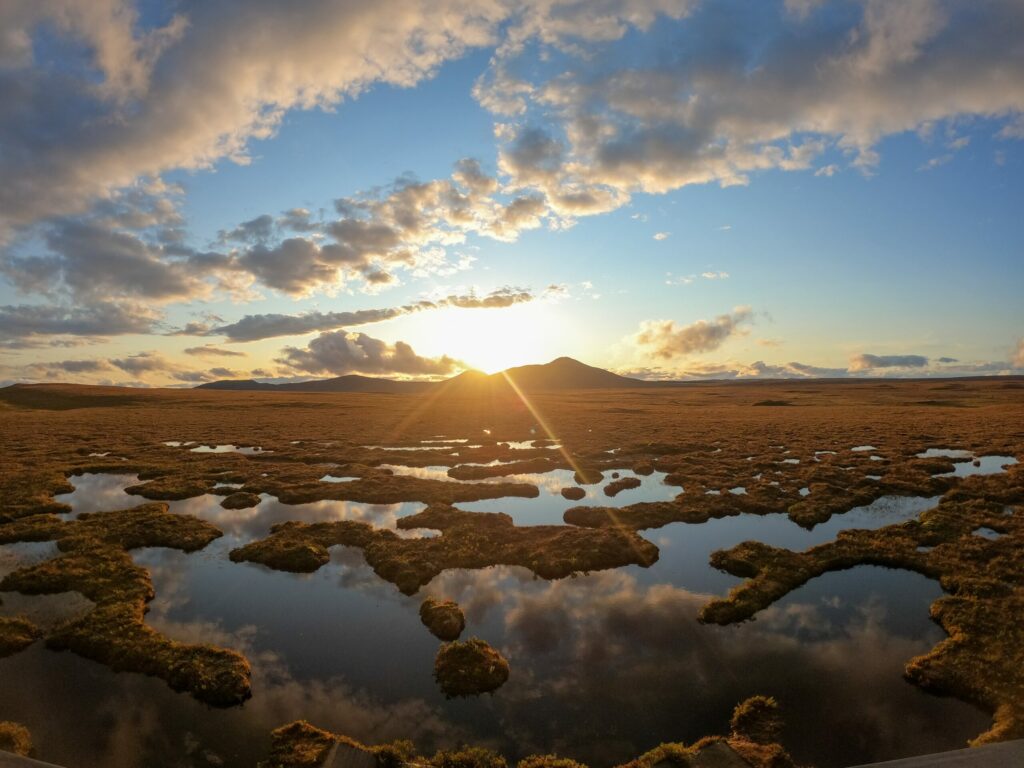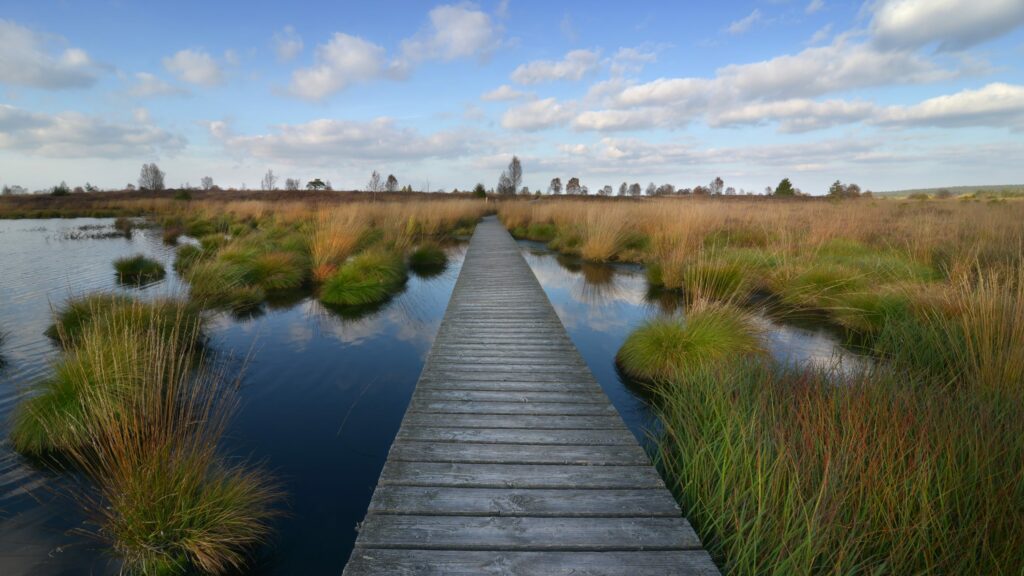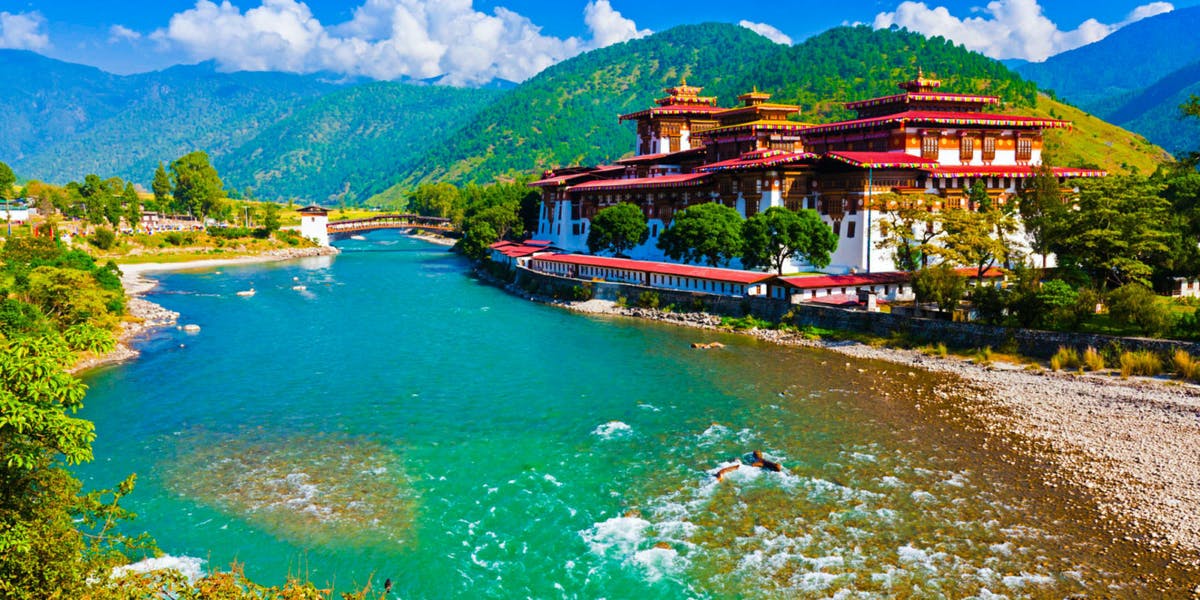Peatlands are one of the world’s most important carbon sinks and have been heavily degraded for several decades. This year for the first time there was a Peatlands Pavillion present at COP26 and for this reason in this blog post I’ll be taking a closer look at the discussions around peatlands that occurred at COP and at what now needs to be done as we move forward.
Importance of Peatlands
Peatlands are the most efficient carbon storage method we have. They cover only 3% of the worlds land areas however they store a huge 33% of the world’s soil carbon, more than all the carbon stored in other vegetation combined. They form through the submersion of biomass in water and over many thousands of years this biomass gets compressed into the substance we know as peat. Peat is burned as a fossil fuel and used in horticulture. Peatlands and bogs also provide habitats for vast amounts of flora and fauna and they have strong cultural and historical importance for many communities. Additionally they are important natural forms of water storage and filtration and flood mitigation. In the UK and Ireland peatlands supply 85% of drinking water. Not only are peatlands extremely important and efficient carbon sinks but they are also very significant carbon emitters when they are degraded, with 5% of the global carbon budget being accounted for by burning and drainage of peatlands.

What happened at COP26 in relation to peatlands?
Despite their huge importance across many areas, peatlands have been damaged through drainage, burning and conversion for agriculture all across the world from Iceland to Indonesia. COP26 was a particularly notable COP in relation to peatlands as this year, the UNEP co-ordinated the first ever Peatlands Pavillion. The goal of this platform was to highlight the importance of peatlands across the world not only for climate change mitigation but also for people and as a key nature-based solution for dealing with many climate challenges.
At the Peatlands Pavillion the Global Peatlands Assessment was launched. This is primarily to inform on peatland distribution, status and trends and to give a global overview of the worlds peatlands. Along with this the Global Peatland Map 2.0 was launched. This aims to improve the knowledge on the location and extent of peatlands worldwide, to enhance efforts to map global peatlands and to inform decision making and policy and to guide conservation and restoration action.
Along with these two initiatives being launched several countries made pledges to protect or restore peatlands. The COP26 hosts Scotland committed to investing £250 million to restore 250,000 hectares of degraded peat by 2030. Several countries such as Chile, Peru and the Democratic Republic of Congo made commitments or mentioned peatlands in their NDCs for the first time. An ambitious project was also announced for Europe which plans to restore 7000 square kilometers of degraded bog across northern England.
What’s next for the worlds peatlands?
Peatlands will play a huge role in climate change mitigation and the introduction of the Peatlands Pavillion at COP26 is positive as it suggests they are getting greater attention. It was announced at COP that Ireland would be hosting a workshop in 2026 to begin shaping the European Peat Initiative. At present most private land owners make more income through exploitation of peatlands than through restoration so there is an urgent need to implement combinations of subsidies for restoration and or taxes/barriers to the further degradation of bogs. There are several ways to restore peat bogs, some methods used in Ireland are the felling of trees, which are left on the bog to decompose, the removal of trees and the closing of drains to allow bogs to re-wet. These methods were successful in restoring up to 2000 hectares of boglands in Ireland in the 2000s and could be used across many other parts of Europe.
A big focus in relation to peatlands going forward is on tropical peatlands. Indonesia has the worlds largest area of tropical peatland which is the 4th largest extent of peat in the world at over 20 million hectares. With the launch of the two projects mentioned above it is hoped that a knowledge gaps surrounding the worlds peatlands will be filled and with this can come better policies in how to protect and restore peatlands going forward.

Sources used in this post are listed below:
https://www.coillte.ie/our-business/our-projects/nature-conservation/ https://baxcompany.com/insights/no-paris-without-peatlands-cop26-peatland-pavilion/ https://forestsnews.cifor.org/75056/asean-peatlands-critical-in-mitigating-the-climate-crisis?fnl= https://www.iucn-uk-peatlandprogramme.org/events/peatland-pavilion-cop26 https://www.unep.org/news-and-stories/story/peatlands-spotlight-cop26 https://www.unep.org/resources/report/economics-peatlands-conservation-restoration-and-sustainable-management



